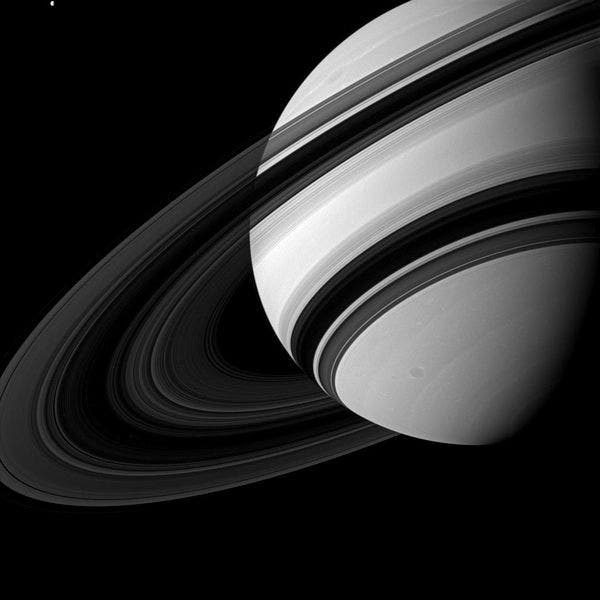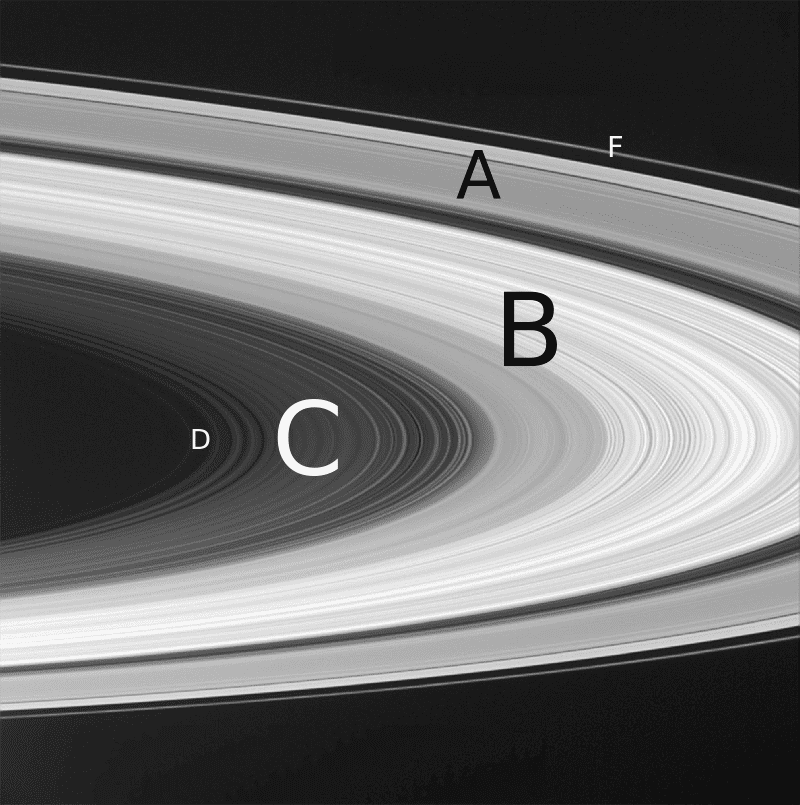New research from NASA found that Saturn, the ring planet, is losing its rings.

Observations made decades ago by Voyager 1 and Voyager 2 show that Saturn is devouring its own rings, NASA reports. The particles making up these striking structures are falling onto the planet as a rain of dust and ice, propelled by Saturn’s gravity and magnetic field.
One ring to bind them
“We estimate that this ‘ring rain’ drains an amount of water products that could fill an Olympic-sized swimming pool from Saturn’s rings in half an hour,” said James O’Donoghue of NASA’s Goddard Space Flight Center in Greenbelt, Maryland, the study’s lead author.
“[…] The rings have less than 100 million years to live. This is relatively short, compared to Saturn’s age of over 4 billion years.”
The research actually began with scientists trying to figure out if Saturn formed with its rings or acquired them later. The second scenario seems to be the more likely, the team reports. In fact, they estimate that the rings are no older than 100 million years. The team based this age on how much it would take for the C-ring to form from a (hypothetical) original B-ring-like structure. Here’s a chart for your convenience:

Image credits NASA / JPL / Space Science Institute via Wikimedia.
There are quite a number of theories in regards to how Saturn got its rings (the most prevalent of which we’ve talked about here). If they’re younger than the planet itself, the rings could be the product of collisions between Saturn and small, icy moons. Such a mechanism would be supported by the rings’ present makeup — chunks of water ice ranging from several yards across to microscopic sizes.
Still, the finding that Saturn acquired its rings later in life is, perhaps, overshadowed by the realization that it’s eventually going to lose them. O’Donoghue says, we’re “lucky to be around” while Saturn still has rings. They’re probably around the middle of their lifetime, he adds. The other side of the coin is that we’ve perhaps missed out on seeing similarly lush ring systems around Jupiter, Uranus, and Neptune. While these gas giants do have ring systems today, they’re thin, wispy things.
Black belt giant
The first hints that Saturn’s rings were raining down on the planet came from Voyager readings on (seemingly) unrelated phenomena: variations in Saturn’s ionosphere (electrically-charged upper atmosphere), density variations in its rings, and the planet’s three dark bands These bands encircle the planet at high altitudes (stratosphere) at northern mid-latitudes, and were first spotted by the Voyager 2 mission in 1981.
Later, a NASA Goddard researcher named Jack Connerney linked (paper here) these bands to the planet’s massive magnetic field. Connerney’s hypothesis was that the bands form as electrically-charged ice particles from Saturn’s rings flowed down magnetic field lines. Tiny particles can get electrically charged by ultraviolet light from the Sun or by plasma clouds emanating from micrometeoroids impacting the rings.
Essentially, water pouring into the planet’s upper atmosphere was what formed these bands. The water would literally wash away haze in Saturn’s stratosphere, making them less reflective of light — so the bands appear darker.
So what actually causes the rings to rain down? Well, they’re generally kept in orbit by an interplay between the planet’s gravitational field (which pulls them down) and the centrifugal force generated by the rings’ rotation (which pushes them outwards, or ‘up’).
Things become more complicated when Saturn’s magnetic field gets involved, however. Those electrically-charged particles we talked about earlier also start feeling the pull of the planet’s magnetic field, which curves towards Saturn at its rings. In some parts of the rings, this magnetic pull is enough to dramatically shift the balance of forces on particles — it neutralizes, to an extent, the centrifugal force. Gravity takes hold, pulling the particles down on the planet.
These infalling bits of water chemically react in Saturn’s ionosphere, generating H3+ ions. O’Donoghue picked up on these ions using the Keck telescope in Mauna Kea, Hawaii, as H3+ ions glow in infrared light. The team saw glowing infrared bands in Saturn’s northern and southern hemispheres where magnetic field lines enter the planet. By analyzing the infrared light output, the team calculated the quantity of infalling ring matter (i.e. of how fast they are degrading).
The highest influx of infalling ice, the paper adds, is found in an area in southern Saturn. Some of the matter spewed by Enceladus’ ice geysers also finds its way down to the gas giant, which Connerney says isn’t “a complete surprise.”
So far, the results are pretty solid. However, the team says observing Saturn as it goes around the sun (on a 29.4-year orbit) would conclusively prove or disprove the findings. On its trek, Saturn’s rings will be exposed to various degrees of ultraviolet light — which charges ice particles in the rings. If researchers find that different levels of exposure to sunlight change the quantity of ‘rain’ on Saturn, the study’s conclusions would be confirmed.
The paper “Observations of the chemical and thermal response of ‘ring rain’ on Saturn’s ionosphere” has been published in the journal Icarus.






